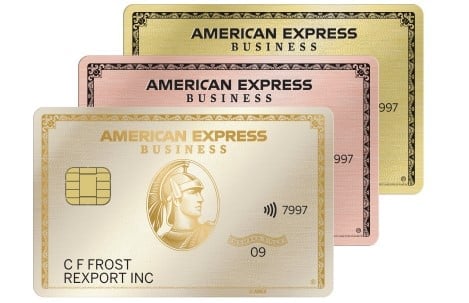What Is Debt Financing — and Is It Right for Your Business?
Debt financing, often in the form of a small-business loan, is one of the most common ways to fund a business.

Many, or all, of the products featured on this page are from our advertising partners who compensate us when you take certain actions on our website or click to take an action on their website. However, this does not influence our evaluations. Our opinions are our own. Here is a list of our partners and here's how we make money.
Debt financing is when you borrow money to finance your business. You agree to pay back the creditor the funds borrowed, plus interest, by a future date. Debt financing differs from equity financing, in which you raise capital by selling partial ownership in your company.
You can get debt financing, such as small-business loans, from traditional lenders, online lenders, fintech companies and even friends and family.
How much do you need?
We’ll start with a brief questionnaire to better understand the unique needs of your business.
Once we uncover your personalized matches, our team will consult you on the process moving forward.
What is debt financing?
Debt financing involves securing money for your business by taking on debt. Generally, you’ll receive a lump sum of money that is repaid over time with interest. Bank loans, SBA loans, lines of credit, commercial mortgages and equipment loans are common options used in debt financing.
The money you received for your business can be used as working capital, to buy assets and for a variety of other purposes. Sometimes debt financing is secured by collateral — business assets such as equipment, real estate and accounts receivables — that can be seized if the debt is not repaid.
In relation to accounts receivable, debt financing is not the same thing as debt factoring where a business sells their accounts receivable to a third party instead of using them as collateral.
How debt financing works
Debt financing can be structured in the form of an installment loan, revolving loan or cash flow loan:
Installment loan. You receive funding from a lender upfront and repay it, with interest, over a fixed payment schedule. Also referred to as traditional term loans, these loans may be secured or unsecured.
Revolving loan. You have access to a set credit line that you can draw from and use as needed. You only pay interest on the funds you use, and once you’ve repaid what you’ve borrowed, your credit line resets. Credit cards and lines of credit are examples of revolving loans.
Cash flow loan. You receive an advance of funds based on your business revenue. Some lenders may consider your business bank account data, while others may look at your recent cash flow and offer funds against your future sales. Invoice financing and merchant cash advances are both examples of cash flow loans.
You can choose either short-term or long-term debt financing — based on a variety of factors, such as how you plan to use your funds, what type of loan you’re looking for and how much time you'd like to be given to repay your debt.
Short-term debt financing
Short-term debt financing typically has a repayment period of 12 months or less — although standard terms can vary from lender to lender. Credit cards and business lines of credit are popular forms of short-term financing.
This type of funding is often used to cover the day-to-day operating expenses of your business. You might use short-term debt financing for working capital, to purchase inventory or to make payroll.
Long-term debt financing
Long-term debt financing generally has repayment terms up to 10 years, and in some cases, as long as 25 years. Common forms include bank and SBA loans.
Long-term financing is used for larger projects and investments, such as equipment purchases, business renovations, acquiring an existing company or opening a new location.
Types of debt financing
There are a variety of funding options to choose from when financing your business with debt. Here are some of the most common types of debt financing.
Business term loans
Business term loans are one of the standard types of debt financing and operate similarly to a car loan or mortgage. With a term loan, you borrow a lump sum of capital upfront for a specific purpose. You repay the loan, with interest, over a set period of time with fixed, equal payments.
Term loans are well-suited for distinct use cases, such as business renovations or expansions. Some loans, like equipment financing or commercial real estate loans, are designed to facilitate specific business purchases.
SBA loans
SBA loans are small-business loans issued by participating lenders, typically banks and credit unions, and partially guaranteed by the U.S. Small Business Administration. The partial government guarantee reduces the risk for lenders and incentivizes them to work with small businesses.
There are several types of SBA loans, but in general, these loans are structured as term loans. The SBA sets guidelines for lenders regarding maximum loan amounts, repayment terms and interest rates.
SBA loans can be a good option for a variety of purposes, including working capital needs, business expansions and equipment purchases.
Business lines of credit
A business line of credit gives you access to a set amount of funds that you can draw from as needed. You only pay interest on the funds you draw, and in most cases, once you’ve paid back what you’ve borrowed, the credit line resets to the original limit.
Business lines of credit are one of the most flexible forms of debt financing — making them suitable for managing cash flow gaps and covering operating expenses, such as purchasing inventory or paying employees.
Business credit cards
Business credit cards operate similarly to business lines of credit. With a business credit card, you have access to a set amount of funds that you can pull from to make purchases. You’ll only start accruing interest on your balance, however, if you don’t pay your bill in full every month.
Business credit cards are a good way to finance every day or short-term expenses — especially since most cards offer rewards programs. These programs give you the ability to collect cash back, travel miles or bonus points for spending on your card.
Invoice financing and invoice factoring
Invoice financing and invoice factoring both allow you to access capital using your unpaid invoices. Invoice financing involves borrowing money from a lender (in the form of a loan or line of credit) against your outstanding invoices, whereas invoice factoring refers to selling your invoices to a factoring company at a discount.
Although these two types of debt financing have their differences, both are well-suited for business-to-business companies that have cash flow issues due to unpaid customer invoices.
Merchant cash advance
With a merchant cash advance (MCA) a company gives you a lump sum of capital upfront that you repay using a percentage of your debit and credit card sales, plus a fee. The MCA company typically deducts a daily or weekly percentage of your sales until the advance is repaid in full.
Although MCAs can be used to cover cash flow gaps and short-term expenses, they are one the most expensive forms of debt financing — with annual percentage rates that can reach as high as 350%. You should consider all other financing options before turning to a merchant cash advance.
Advantages of debt financing
Maintain control of your business. Debt financing allows you to maintain complete control of your business, unlike equity financing. Whereas an investor receives an equity position in your business, a lender has no part in running your company.
Tax-deductible interest payments. In most cases, the interest payments on your debt financing will be tax deductible. This interest tax deduction is generally available as long as you’re borrowing money from an actual lender (and not friends or family) and using it for business purposes. Other loan costs, such as origination fees, can also be tax-deductible.
Easier to plan for the future. With debt financing, you can access capital relatively quickly and invest it in your business’s growth. And because you know how much you’ll need to repay every month, it’s easier to budget and plan for your company’s future.
Build business credit. Making timely payments on your debt financing can help establish and build your business credit. Developing a strong business credit history can help you qualify for loans with the most competitive interest rates and repayment terms in the future.
» MORE: How to apply for a business loan
Disadvantages of debt financing
Can risk assets or credit history. Taking on debt can be risky for your business and personal finances. To get financing, you may have to put up your business assets as collateral or sign a personal guarantee. If you default on the loan, the lender can seize your business assets — or in the case of a personal guarantee, your personal assets — to recoup their losses. Late or missed payments could negatively impact your credit history, making it more difficult to qualify for financing in the future.
Can be a financial strain on the business. Debt can make it difficult to manage your business finances. You’ll need to make consistent payments on your loan, regardless of your revenue, which can be particularly taxing on seasonal businesses or those with inconsistent cash flow. Some businesses may also find it more challenging to try and grow operations while managing and repaying debt.
Can be difficult to qualify. Although debt financing is often easier to access than equity financing, it can be difficult to get options, like bank loans, that offer the most competitive terms and business loan rates. To get a bank loan, for example, you’ll typically need excellent credit, several years in business and strong finances. You may also have to put up collateral. Newer businesses and those with fair or bad credit may have a harder time accessing affordable debt financing.
How to choose debt financing for your business
If you’re thinking about financing your business with debt, consider the following factors to find the right option for your needs:
Why you need funding for your business.
How much capital you need.
Your business’s qualifications (e.g., personal credit score, time in business, annual revenue).
How fast you need access to funding.
How much debt you can afford.
Alternatives to debt financing
If debt financing isn’t the right fit for your business, there are a few other options to consider when you need funding for your business.
Equity financing. As previously discussed, equity financing is when you receive money from an investor in exchange for an amount of ownership in your business. In this case, you don’t take on debt, but you are no longer the sole owner of your operation. Learn more about the difference between equity and debt financing.
Business grants. Offered by federal, state and local government agencies as well as private organizations, grants don’t involve taking on debt, but winning one can be challenging because the competition is often stiff.
Crowdfunding. Using online sites such as Kickstarter and Indiegogo can allow you to solicit funds for your business without taking on additional debt, if you set up a rewards- or equity-based program.
A version of this article originally appeared on Fundera, a subsidiary of NerdWallet.





